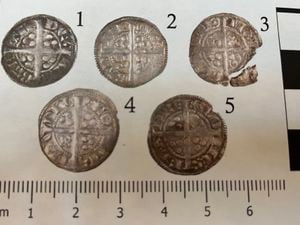Bid to protect Shirehall from demolition set to be rejected
Bids for Shirehall to be granted listed building status are set to be rejected, paving the way for the possible demolition of the Shropshire Council headquarters.

Historic England has judged that the building, on Abbey Foregate in Shrewsbury, does not hold the required architectural or historical interest to warrant being added to the National Heritage List for England.
It has recommended that Shropshire Council’s request for a certificate of immunity from listing (COI) be granted, and two rival applications for listing be rejected.
A final decision will now be made by the Secretary of State for Digital, Culture, Media and Sport, after a 28-day period in which interested parties can make their final representations.
In its advisory report published today, Historic England acknowledges Shirehall is “undeniably a striking building” and “is the county’s major monument to post-war Modernism”.
It says there are a number of features worthy of merit, in particular the former crown court wing.
But the report adds: “While the Shirehall has elements that are well-composed, distinctive, and richly detailed, these make up a limited proportion of the extensive complex.”
Historic England concludes that the structure as a whole does not meet the criteria for listing.
Distinctive
The report says: “From the south, it is a distinctive, well-composed, and carefully-scaled building which respects its landmark location, but these qualities of interest diminish towards the rear.
“The rounded council chamber forms a successful, eye-catching counterpoint to the angularity of the rest of the building, and has a particularly good concourse below, but is a conventional feature for the period.”
The report says Shirehall was constructed in the 1960s to be “permeable” and “accessible” from different directions to symbolise the openness and transparency of local government – a common design concept of town and county halls. But it adds that some previously open areas have been under-built and therefore “those connections, and thus the symbolic intent, have been lost”.
The report continues: “The council suite is a generous space provided drama in its full-height glazing and coffered ceiling, but, along with the committee rooms, is otherwise relatively sparsely detailed.
“While a consistent approach is taken in the style of the building’s joinery, there are few other features, and a limited palette of materials, which enrich the interior.
“The courts are the exception, but the rich materials within this small area of the building as a whole, is insufficient in compensating for the treatment elsewhere.
'Falls short'
“The fountain pool, which was the principal landscape feature, was problematic and has been infilled.
“The national stock of civic buildings of the post-war decades include a number of high-quality examples, exhibiting innovative design and planning, rich, symbolic materials and art works, and with integrated landscapes, and against those listed examples, the interest of the Shirehall falls just short.”
The council applied for a COI earlier this year after revealing its intentions to vacate the building by 2023 in favour of a smaller base in the town centre.
The move has attracted criticism from some members of the public and led to the formation of campaign group ‘SOS – Save Our Shirehall’. Historic England received 24 objections to the COI application.
Council leader Peter Nutting welcomed the Historic England recommendation.
He said: “I think it will allow the council and whoever purchases the site a degree of freedom to consider all possible options for the buildings and the wider site, subject of course to normal planning approvals.
“From the council’s perspective it probably means the site is worth more money which will help with plans for a replacement headquarters.”





